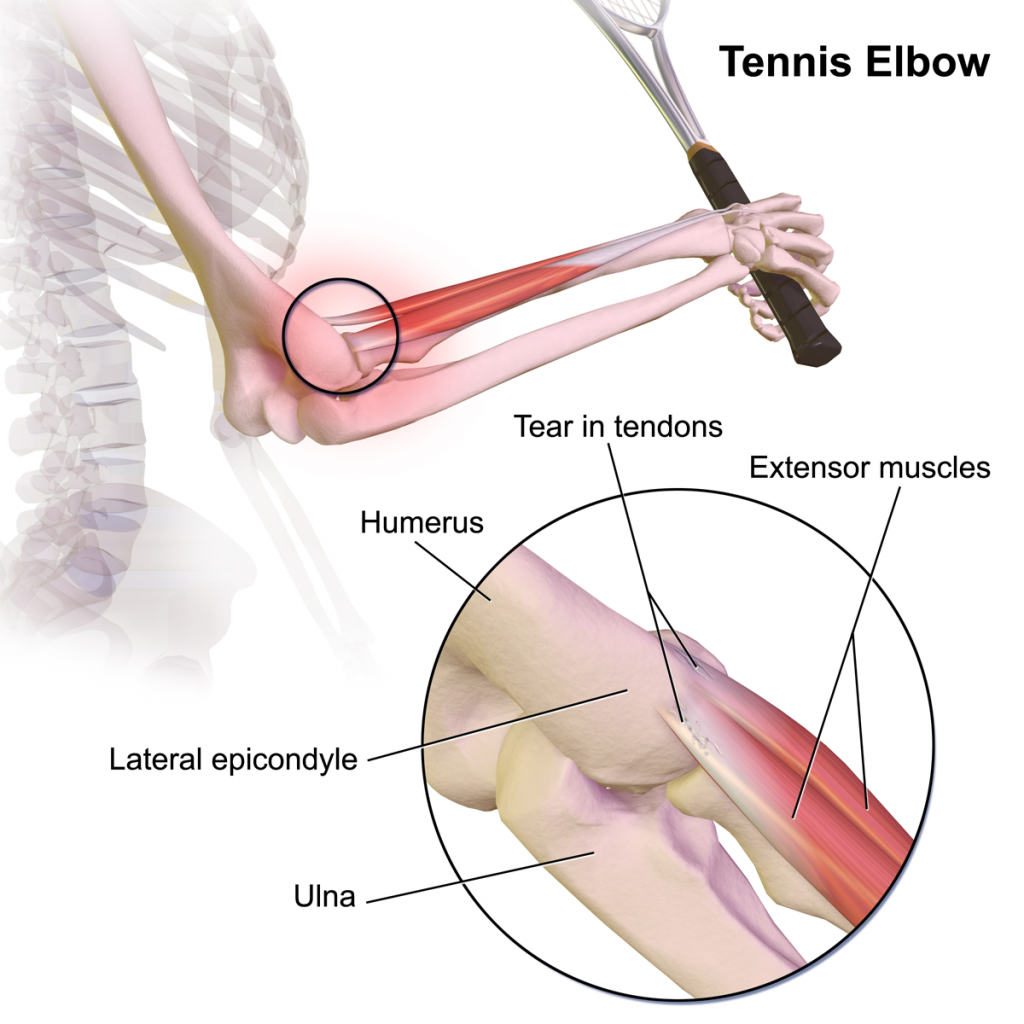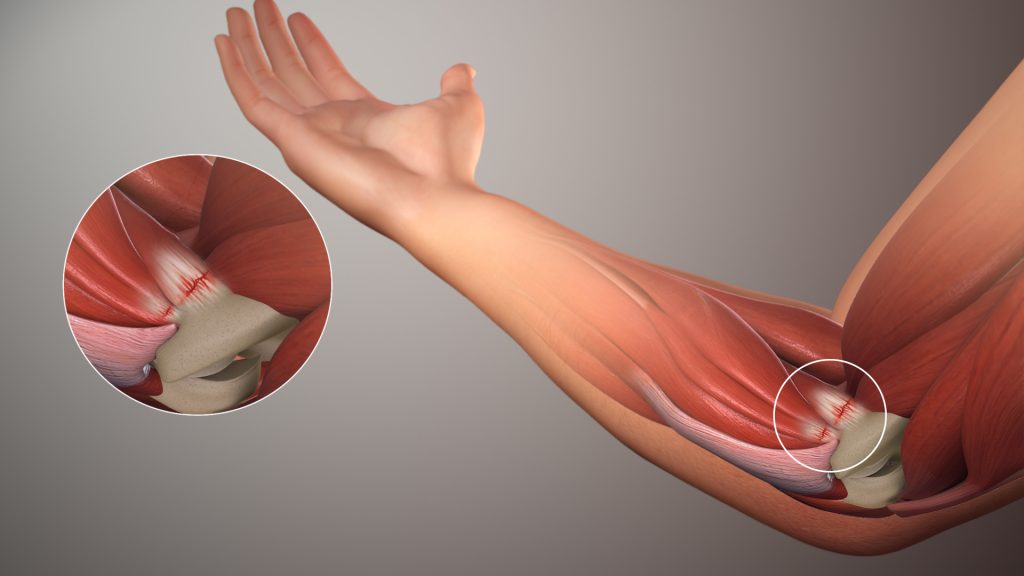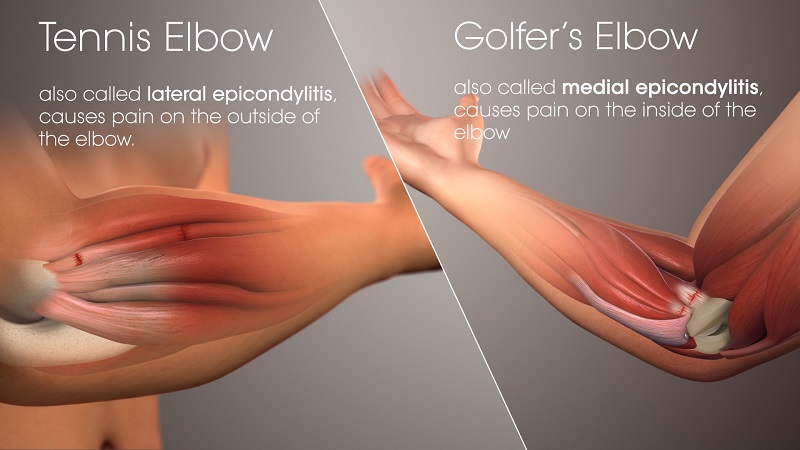Golfer’s Elbow vs Tennis Elbow: What’s the Difference?
Is golfer’s elbow the same as tennis elbow?
No, these conditions are entirely different despite affecting the same joint.
If you’re experiencing recurring elbow pain when you move the forearm, there’s a high chance that you are suffering from tennis elbow or golfer’s elbow. Despite popular belief, they are not the same, nor are the leading causes limited to eponymous sports injuries.
This article clears the doubts and misconceptions surrounding these degenerative disorders.
Golfer’s Elbow vs. Tennis Elbow: The Basics
Here is a brief overview of these medical conditions:
Tennis Elbow
Tennis elbow (or lateral epicondylitis) is commonly caused by excessive use of the affected joint. Repetitive arm movements (like playing racquet games) place unwanted strain on the elbow’s outer tendon. It’s an overuse and degenerative condition that usually targets the dominant arm.
Elbow pain develops gradually, starting as a dull ache before increasing in intensity and radiating towards other parts of the arm. Other symptoms include weakened grip strength, reduced flexibility, numbness, and swelling.

Tennis elbow treatment revolves around pain medication and targeted physical therapy. Most tennis elbow exercises aim to restore movement and regain muscle strength. They involve stretching and strengthening routines to improve flexibility.
Golfer’s Elbow
Golfer’s elbow (or medial epicondylitis) targets the inner side of the elbow and arm. It’s an overuse injury caused by repetitive flexing or twisting of the arm, similar to the motions of swinging a golf club. It occurs in older people, athletes, and individuals who frequently flex their wrist(s) to grip/lift objects while performing everyday activities (both recreational and occupational).
Common symptoms of golfer’s elbow include tenderness, swollen elbow joint, stiffened muscles, and reduced range of motion. Elbow pain worsens when you flex injured wrists to pick/squeeze an object.

Our physical therapists recommend golfer’s elbow exercises to alleviate localized pain, improve mobility, and offer joint support. These are accompanied by onsite golfer’s elbow treatment (i.e. manual therapy, soft tissue massage, and Neubie treatment).
The Difference: Golfer’s Elbow vs. Tennis Elbow?
Both elbow injuries are caused by repetitive arm and wrist movements, and they share some symptoms. Yet, this is where the similarities end.
These conditions are distinctive and easy to identify if you consider the location, pain point, and localized symptoms.

Here’s a closer look at the main differences:
Affected Tendon
Golfer’s elbow affects the inside of the elbow joint (medial epicondyle). For example, patients suffering from this condition have trouble picking up and gripping objects.
On the other hand, the tennis elbow targets the lateral (outside) epicondyle tendon. These muscles enable you to spread your fingers and stretch the wrist in a forward movement (flexion).
Inflammation Region
Another difference stems from the affected tendon. Patients experiencing elbow pain from tennis elbow will notice inflammation and tenderness in the outer region of the elbow and forearms. Alternatively, people with golfer’s elbow will notice swelling and irritation around the inner side of the affected elbow and overall arm.
As a result, most symptoms are felt on the opposite sides of the injured elbow and arm. Elbow pain and inflammation might extend towards the wrist and fingers without proper intervention.
The Bottom Line
In a nutshell, the difference between golfer’s elbow and tennis elbow lies in the location of the elbow injury and inflammation point. Symptoms might also vary due to the different tendons affected by the tendinitis condition.
Our physical therapists create personalized physical therapy plans to treat both types of elbow conditions. After a detailed assessment, we determine the best treatment plan to observe current pain patterns and mobility issues. These include strengthening and stretching exercises through a home care program. We also provide onsite therapy such as soft tissue massage, mobilization, and Neubie treatment.
Call 201-773-8851 today to kick-start treatment at Specialized Physical Therapy in Fair Lawn, New Jersey, or contact us for more details.
